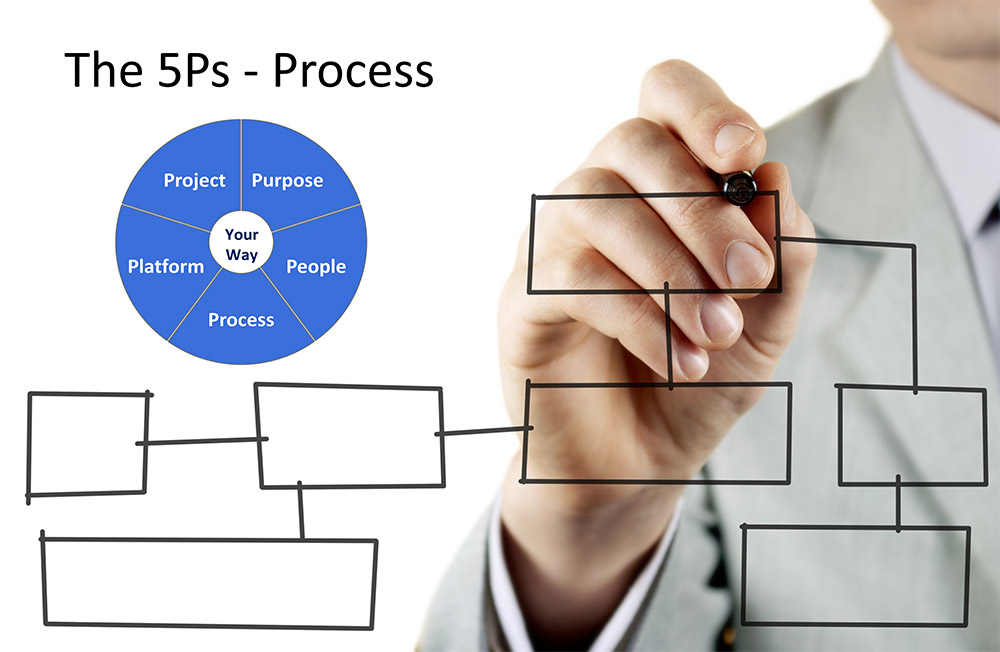Rethinking process can dramatically transform and change how a business operates and performs. It’s also where the hard work should happen to realize meaningful business outcomes.
This can be accomplished by understanding current state processes, outline opportunities to improve and defining new future state processes that transforms and changes the business in a manner that supports the Purpose’s intent.
Unless this is day one for your company, processes already exist. Understanding what’s in place is key. It’s doubtful that any single employee has a comprehensive understanding of how it all works across the entire company. Therefore, gather your subject matter experts to flow chart the business. Who better to have on the team than your best People. They know how process really works and what can be improved upon. This can be accomplished through value stream mapping Kaizen events and these have become a very useful method to achieve this. Assemble the team, find a big room and conduct a Kaizen event.
Start out with Purpose and look to see how Process can achieve the desired outcomes. Begin by creating a detailed current state flow chart for the entire business. The objective at this point is to thoroughly understand how the business flows. Key points to consider and address:
- What do customers truly value?
- What processes are in place?
- Which processes differentiate the business?
- How do the processes interact?
- What pain points exist?
Some process examples:
- Product/Service Development
- Project Management
- Operations
- Manufacturing, Distribution, Supply Chain
- Sales and Marketing
- Customer Service
- Finance and Accounting
- Human Resources
- IT
As current state process comes together, not only do those processes that differentiate come to light, many opportunities for improvement are captured.
Once current state flow is complete, pivot and begin to consider new, future state process flows. It’s not uncommon to see innovative and game changing ideas come to light at this point and those ideas should be encouraged. Reinforce those processes that differentiated, address opportunities to improve (while eliminating wasteful activities identified in the current state) and lastly incorporate industry best practices wherever possible.
Once a future state process and vision is outlined, prepare and conduct an Executive report out that challenges and/or validates the findings. Do the finding satisfy the intent of Transformation and Change Purpose, while remaining in line with company objectives?
Now that was the easy part. Actions identified must now turn into roadmaps, projects and tangible deliverables that must be executed to achieve the future state designs and benefits. In the interim, there is a business to operate, so patience is required. Rome was not built in a day, nor will the actions identified be realized overnight. The journey will require the current and future states to play nicely together, so evolution versus revolution will be the order of the day.
Now with Process defined to achieve Purpose’s intent, People, Platforms and Projects come into play.
The value stream mapping Kaizen approach to transform and change process can be used from small to large processes, whether they are with small groups or with enterprise scale operations.
From current to future state, embrace the best of what is in place, reinforce what differentiates in the market, eliminate waste and complement with best practice.
This is how to transform and change a business.
Dave Brady, Turning Point President and CEO
© 2024 Turning Point Consulting


